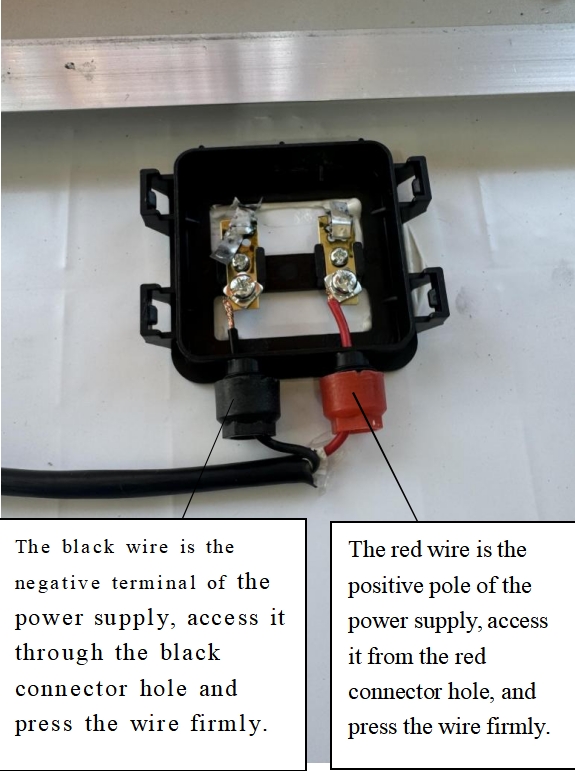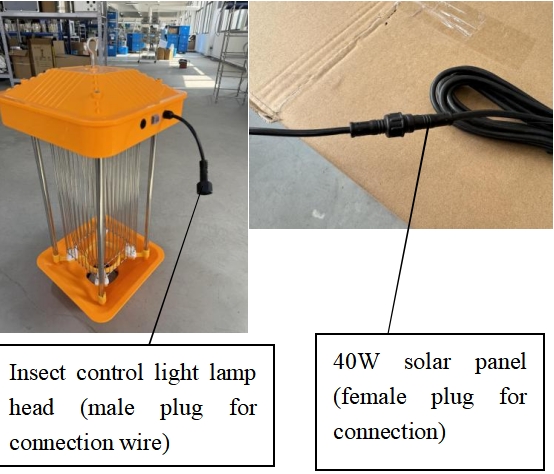

— Blogs —
—Products—
 Consumer hotline +8618073152920
Consumer hotline +8618073152920 WhatsApp:+8615367865107
Address:Room 102, District D, Houhu Industrial Park, Yuelu District, Changsha City, Hunan Province, China
Product knowledge
Time:2025-10-08 15:28:17 Popularity:515
Product Overview: The Anatomy of a Modern Solar Trap
A solar-powered insect light trap is a complete, off-grid solution essential for modern solar insect trap for agriculture applications. It consists of four integrated components:
Solar Panel: Charges the internal battery during the day.
Battery & Controller: Stores energy and manages the dusk-to-dawn operation.
Light Attractant: Emits specific UV or LED wavelengths to attract target pests.
Trap Mechanism: Captures the insect via an adhesive plate, electric grid, or suction fan (vacuum).
The best models offer modular design and robust construction, addressing many common disadvantages of solar insect trap systems, such as limited autonomy.
When evaluating the solar insect trap price and value, do not rely on features alone. Compare these critical specifications:
Specification | Importance | Typical Range / Best Practice |
Panel Wattage & Battery Ah | System Autonomy. Dictates how many consecutive nights the trap can run without sun. | Larger panel + higher Ah = longer autonomy (3+ nights is ideal). |
Light Spectrum (nm) | Pest Selectivity. Ensures the trap targets harmful species while minimizing non-target catch. | Narrow-band UV (e.g., 365–420 nm) vs. broad white light. |
Coverage Area | Deployment Density. Determines how many traps you need per field/hectare. | Varies by pest and light strength (e.g., 1–3 traps/ha). |
Ingress Protection (IP Rating) | Durability. Resistance to dust, rain, and jets of water. | IP65 or higher is essential for field agriculture. |
Connectivity | Value/Uses. Turns a trap into a remote data node. | LoRa (long range, low power) or 4G (high data, higher running cost). |
Ensure your chosen solar-powered insect light trap includes these features for reliability and ease of use:
Auto Dusk-to-Dawn Sensor: Reliable automation that saves battery life.
Anti-Corrosion Housing: High-grade, UV-stable plastics and metals to withstand chemical exposure and weather.
Easy Clean Trays/Modular Boards: Quick servicing reduces labor time—a key component of the trap's ROI.
Replaceable Battery Packs: A design that allows for simple, cost-effective replacement of the battery module every 3–5 years.
Firmware Over-the-Air (OTA): For smart models, this allows remote updates and maintenance.
Proper setup is vital for maximizing the solar insect trap uses and ensuring continuous operation:
Mounting: Secure the trap housing on a sturdy post, typically 1.2–1.5 meters above the crop canopy.
Panel Orientation: Mount the solar panel facing the optimal sun exposure (South in the Northern Hemisphere, North in the Southern Hemisphere) ensuring zero shading.
Commissioning: Activate the trap. If it is an IoT model, complete the app/dashboard pairing and run a three-night test to ensure reliable charging and communication.
Baseline Documentation: Document the first two weeks of catch data to establish a crucial baseline for your pest monitoring thresholds.

Understanding the trade-offs is key to determining which solution provides the best solar insect trap price for your scenario.
| Factor | Solar-Powered Insect Light Trap | Mains-Powered Trap (Wired) |
| Flexibility/Placement | HIGH. Can be placed anywhere in the field/forest—ideal for remote use. | LIMITED. Requires proximity to an electrical source or generator. |
| Upfront Cost | Moderate–High (Due to panel/battery/controller). | Low–Moderate (Simpler components). |
| Running Cost | LOW. Effectively free after installation. | Variable (Subject to rising electricity costs). |
| Installation Labor | Low (Simple post mount). | High (Trenching, wiring, conduit installation). |
| Reliability in Cloudy Weather | Variable (Must choose high-autonomy model). | Stable (Consistent power). |

A large-scale vegetable exporter, seeking to reduce chemical usage and improve traceability, piloted 50 NiuBoL solar-powered insect light traps featuring LoRa telemetry across their fields.
The Result: The integrated system provided a centralized pest monitoring dashboard, enabling the farm manager to reduce emergency sprays by 50% and leading to a demonstrable increase in export acceptance rates due to lowered chemical residues. The ROI easily justified the initial trap cost.
Q: How long does the battery in a solar-powered insect light trap typically last?
A: Depending on the battery type and usage cycles, commercial-grade Li-ion batteries typically last 3–5 years.3 We recommend models with easily replaceable battery modules to minimize long-term TCO.
Q: Do these traps work in areas with minimal sunlight?
A: Yes, but selection is crucial. You must choose a high-efficiency model with a large panel and battery capacity. This addresses the key disadvantages of solar insect trap systems in less sunny regions.
NiuBoL offers a comprehensive line of solar-powered insect light trap products—Basic, Pro, and IoT models—all backed by our commitment to quality, durability, and data integration. We provide sample deployments and integration with leading farm management dashboards.
Take the next step toward smarter farming. Contact: sales@niubol.com to request spec sheets, bulk pricing, and a custom deployment assessment.
Related recommendations
Sensors & Weather Stations Catalog
Agriculture Sensors and Weather Stations Catalog-NiuBoL.pdf
Weather Stations Catalog-NiuBoL.pdf
Related products
 Combined air temperature and relative humidity sensor
Combined air temperature and relative humidity sensor Soil Moisture Temperature sensor for irrigation
Soil Moisture Temperature sensor for irrigation Soil pH sensor RS485 soil Testing instrument soil ph meter for agriculture
Soil pH sensor RS485 soil Testing instrument soil ph meter for agriculture Wind Speed sensor Output Modbus/RS485/Analog/0-5V/4-20mA
Wind Speed sensor Output Modbus/RS485/Analog/0-5V/4-20mA Tipping bucket rain gauge for weather monitoring auto rainfall sensor RS485/Outdoor/stainless steel
Tipping bucket rain gauge for weather monitoring auto rainfall sensor RS485/Outdoor/stainless steel Pyranometer Solar Radiation Sensor 4-20mA/RS485
Pyranometer Solar Radiation Sensor 4-20mA/RS485
Screenshot, WhatsApp to identify the QR code
WhatsApp number:+8615367865107
(Click on WhatsApp to copy and add friends)
